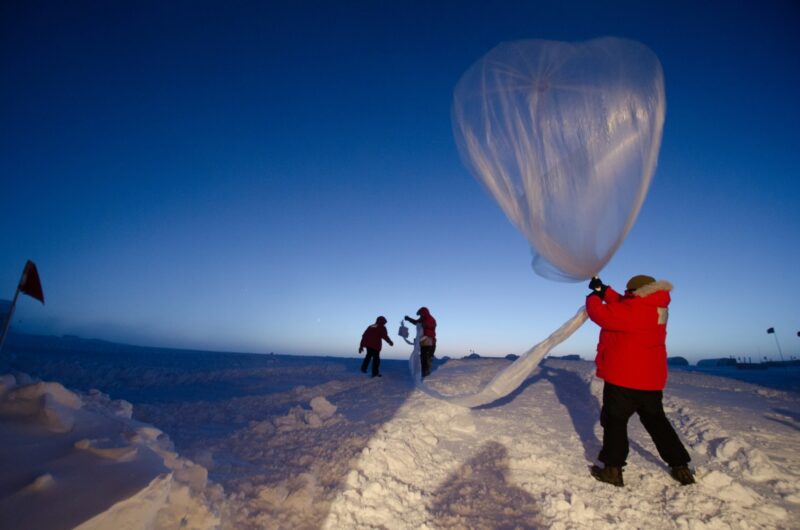Don’t shift the goalposts of Paris Agreement’s temperature limits
Carl-Friedrich Schleussner, Joeri Rogelj, Matthias Mengel
The adoption of the Paris Agreement started a lively debate among scientists about the interpretation of several of its elements. Of particular interest has been the long-term temperature goal of limiting warming to “well below” 2°C or 1.5°C above pre-industrial levels and the question of how progress against the goal should be tracked. As there are a number of different observed datasets for global temperature – as well as methods that use climate models – it means different studies can arrive at different assessments.
Share

This article originally appeared on the Carbon Brief
But therein lies a problem. If studies use a different dataset or method from the one that underpins the Paris limits – established in the IPCC’s fifth assessment report (AR5) – they are potentially tracking something different from 1.5C or 2C.
To provide consistent information for policymakers – and not inadvertently shift goal posts – new research needs to be linked to the science underlying the Paris Agreement.
A blind spot in the scientific debate
The Paris Agreement represented a step-change not only for climate policy, but also for climate science. It provides an important new signpost for climate scientists who want to link their research to policy.
Effectively informing the climate policy debate, however, requires a fundamental understanding of the context of the Paris Agreement’s key elements. This includes its legal, policy and scientific aspects, such as the long-term temperature goal.
The renewed focus on 1.5C, in particular, has seen a flurry of studies attempt to quantify how achievable the limit is. Many of these studies use the concept of carbon budgets – the amount of CO2 emissions we can emit while still holding warming to no more than 1.5C.
A 2017 study by Dr Richard Millar and colleagues triggered a scientific debate about how using different metrics to assess global temperature will affect the remaining carbon budget to achieve 1.5C. The research quantified the amount of global warming to date and used this as a basis for calculating the remaining 1.5C budget.
The findings suggested a carbon budget of more than 15 years of current emissions for a 66% chance of holding temperature rise to 1.5C. This is larger than most other estimates.
Their surprising conclusion was partly a result of their choice of temperature record, as well as a well-known difference between observed and model-based global average temperature estimates. This was explained in more detail in a Carbon Brief article at the time. Recent literature has also explored other factors that affect the size of the carbon budget.
But the debate revealed a worrying blind spot when it comes to the linkage to the Paris Agreement. Global temperature limits are political targets based on risk assessments. Policymakers did not adopt the 1.5C and 2C limits for the sake of it, but because they intend to avoid the impacts of climate change that come with reaching or exceeding these warming levels.
Keeping this original intention for the temperature limits in mind is essential. In our new paper, published in Environmental Research Letters, we examine the reasons why.
The Paris Agreement rooted in IPCC science
We start from the precise wording of section 1a of Article 2 from the final Paris Agreement text, which specifies the goal of:
“Holding the increase in the global average temperature to well below 2C above pre-industrial levels and pursuing efforts to limit the temperature increase to 1.5C above pre-industrial levels, recognising that this would significantly reduce the risks and impacts of climate change.” (emphasis added)
As with all legal text, each word in this paragraph matters and, in this case, means that the temperature goal is specifically linked to the risk assessment of climate impacts at 1.5C and 2C.
Digging a bit deeper into the history of the UN Framework Convention on Climate Change (UNFCCC) reveals a process called the 2013-2015 Review, which assessed the adequacy of the long-term temperature goal.
The 2013-2015 Review included a Structured Expert Dialogue between over 70 experts and parties to the UNFCCC, which discussed climate impacts at 1.5C and 2C. Its final report was instrumental for the process leading to the adoption of the Paris Agreement temperature goal.
As with other appraisals of climate risks at the time, the Structured Expert Dialogue was itself informed by the most comprehensive climate science assessment available: the IPCC’s AR5.
AR5 had a prevalent method to assess global average temperature: it used the observed record from HadCRUT4 dataset and the average of multiple climate model projections (relative to a 1986-2005 baseline) thereafter.
Other policy-relevant IPCC products were also based on this method – including, for example, the Reasons for Concern framework (see below), which aggregates the various risks of climate change into five main areas and shows that the risks worsen as global temperatures rise.
A central synthesis product on climate-related risks from IPCC AR5 Working Group II (WG2). Risks associated with reasons for concern are shown at right for increasing levels of climate change. The colour shading indicates the additional risk due to climate change, from undetectable (white) to very high (purple). Source: IPCC AR5 WG2 Summary for Policymakers (pdf)
It is, of course, the way of science that new and improved methods to assess global average temperature come along or that models improve. However, understanding how new methods compare to the AR5 approach is essential in order to support the policy process and not unintentionally shift political goalposts.
This becomes even more crucial for the 1.5C limit.
Moving goalposts and underestimating impacts
Using alternative methods to define warming of 1.5C can lead to a difference of up to about 0.2C compared to the approach used in AR5. And this is even without considering the potential variation due to different definitions of the pre-industrial reference period.
A couple of tenths of a degree makes a large difference for such a strict limit as 1.5C. It is enough, for example, to overestimate the 1.5C carbon budget by around 10 years at current emissions. And for highly-sensitive systems, such as coral reefs or sea ice, even small increments of warming make a distinguishable difference.
The chart below shows another two examples – the increase in heat extremes (left) and sea level rise (right) under the AR5 definition of 1.5C (green lines) and the Millar et al approach (blue).
The intensification of extreme hot days is stronger at 1.5C, according to the Millar et al method, than the AR5 one (the blue line is further to the right of the green one). Similarly, sea level rise by 2100 under 1.5C for Millar et al is about 5cm higher (an additional 10%) than for AR5.
Differences in changes in hot extremes (left) and sea level rise (right) under 1.5C of warming using the AR5 method (green lines/bars) and the Millar et al method (blue lines/bars). Charts show changes in hot extremes (TXx) on global land area at 1.5C relative to the 1986-2005 reference period and sea level rise in 2100 relative to 1986-2005 (boxes indicate the 66% range, the white bar the median). Source: Pfleiderer et al (2018).
Our analysis shows that the method used to define global temperature does make a difference for impact assessments and also, therefore, for the policy targets based on them. In the above example, the impacts policymakers wanted to avoid by adopting a 1.5C limit would have already occured at 1.3C – a quantifiable difference.












